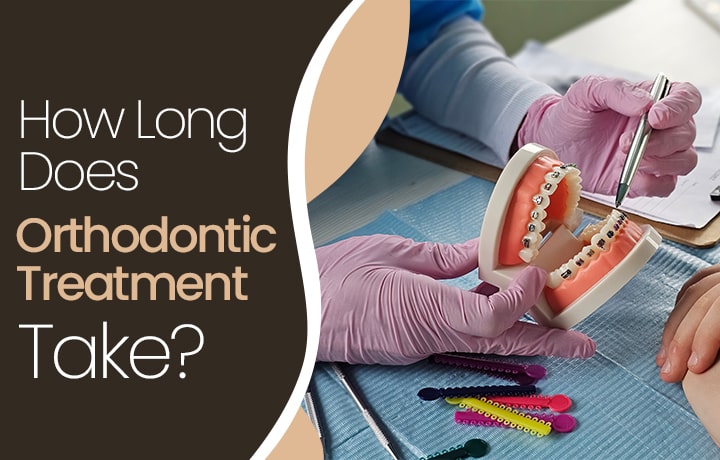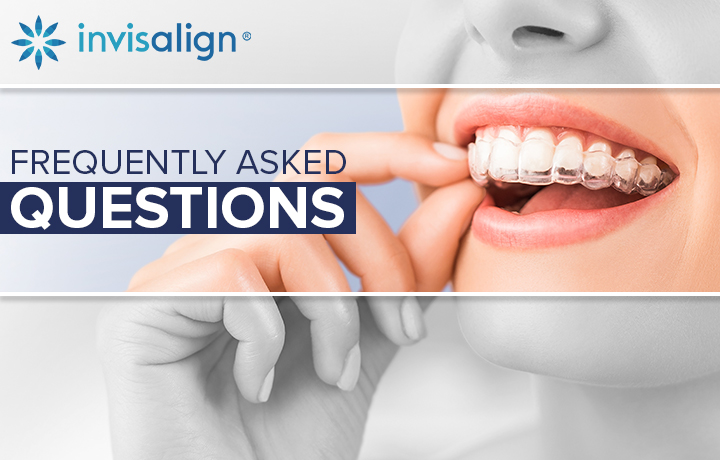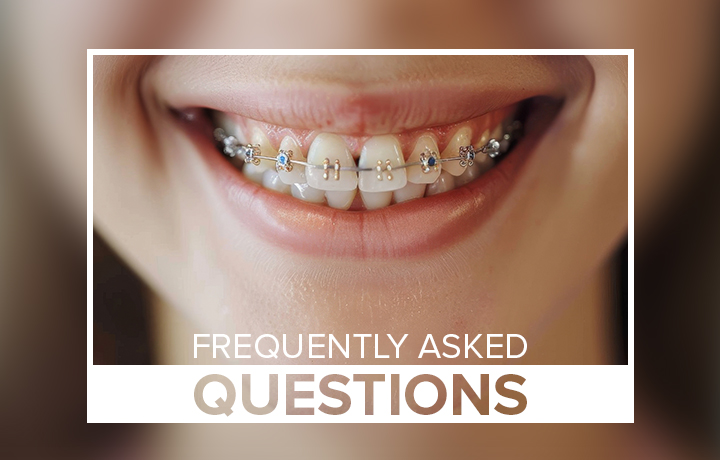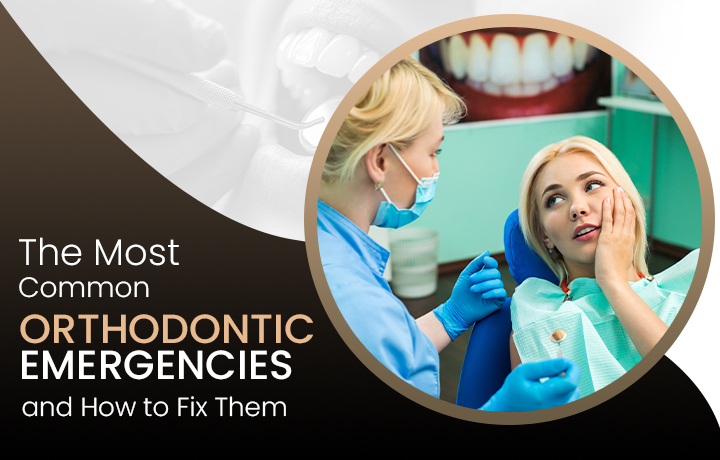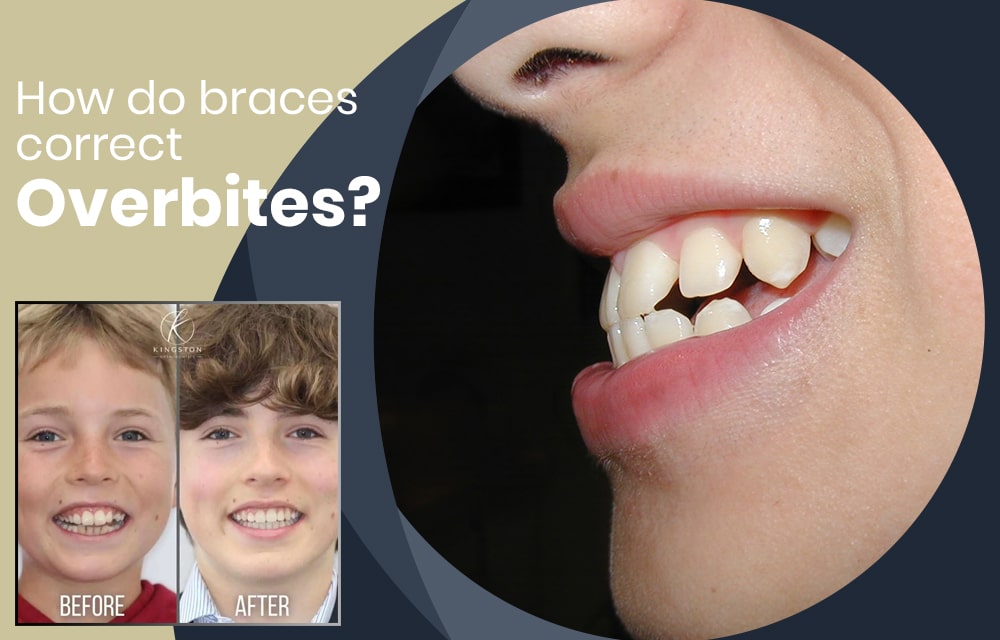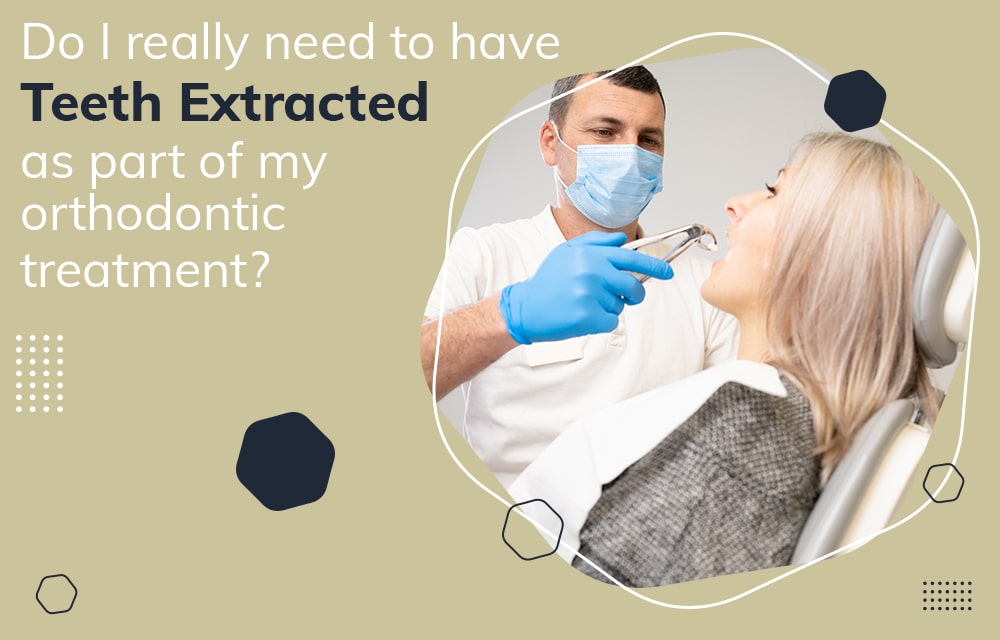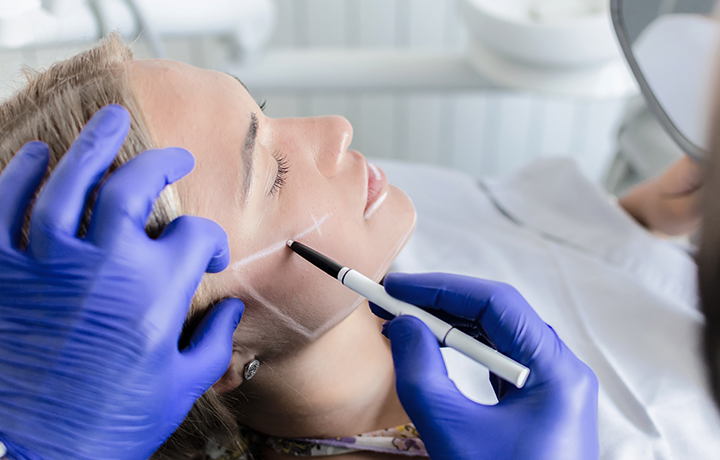
The Ultimate Guide to Orthognathic Surgery for Correcting Jaw Misalignment
Are you struggling with a jaw alignment issue?
Are you having difficulty chewing, biting, or speaking correctly?
If so, you are not the only one. Your dental health, facial appearance and quality of life can all be negatively affected by a misaligned jaw. Orthognathic surgery can help with that.
Your jaw will be realigned during this procedure to enhance both function and appearance. Whether the misalignment results from a genetic predisposition, an injury, or developmental problems, this surgery can offer long-lasting advantages. This comprehensive blog will explore jaw alignment issues and how orthognathic surgery can help to correct them. Don't let the misalignment of your jaw stop you!
What is a Jaw Alignment Issue?
Misalignment of the jaw occurs when there is a significant difference is the size and/or position of your upper and lower jaw. It can cause issues with chewing, biting, speaking and self esteem.
Several factors are responsible for jaw misalignment –including developmental abnormalities, genetics, traumaand habits. An important factor in jaw alignment issues is genetics. You may have inherited misaligned jaws from either of your parents or a more distant member of your family. Certain conditions and syndromes can result in an alteration in the Jaw alignment. Trauma, such as a facial injury or an accident can also cause a jaw alignment issue. Habits such as prolonged thumb or digit sucking can also lead to problems with jaw and bite alignment. The severity and affect of these issues can vary from one person to the next. For a diagnosis, you must speak with a consultant level orthodontist as well as a maxillofacial surgeon.
What is the role of surgical orthodontics in improving jaw alignment issues?
Orthognathic surgery is recommended for people with severe jaw size or shape malalignment that cannot be corrected with non-surgical treatments. The surgery can improve overall oral function, the bite, speech and self esteem. Additionally, it can restore facial harmony and enhance facial appearance.
Orthognathic surgery is performed by specialists, including a consultant level orthodontist, a consultant maxillofacialsurgeon, and sometimes a clinical psychologist. With dental scans, photographs, and X-rays, the orthodontist can thoroughly evaluate the patient’s condition and plan the appropriate joint orthodontic and surgical approach. A joint evaluation with the orthodontist and maxillofacial surgeon is crucial before embarking on this treatment. It ensures that both specialists fully understand and address the patients concerns and plan the ideal orthodontic and surgical procedures for the patient.
Jaw Surgery Procedure
Typically, combined surgical orthodontics and orthognathic surgery is a process that takes two to three years depending on the complexity of the case. Using a brace to realign the teeth and place them in the ideal final position is the first step. The jaw surgery then takes place approximately 12 -18 months after the braces are fitted. The braces remain in place before, during and for approximately 6-9 months after jaw surgery. Once active treatment is complete, the braces are removed and permanent and removable retainers are fitted. Below is a description of the specifics of the jaw surgery procedure.
What Diagnostic Procedures are Available for Jaw Alignment Issues?
Your orthodontist or maxillofacial surgeon will take a full history from you including a medical history. They will fully evaluate your face, jaw, teeth and bite then perform a number of diagnostic tests.
X-rays are used to identify misalignments and abnormalities. A full panoramic x-ray of all your teeth as well as a profile (cephalometric) x-ray will be taken. These provide images of your jaws, teeth, and facial bones. In addition, a cone beam 3D CT scan may be advised to give a thorough picture of your facial and jaw skeleton.
Digital scans are often converted into 3D dental prints or moulds to allow the orthodontist to assess how your bite would fit together following jaw surgery. A virtual representation of your jaw surgery with the final intended position of your teeth and jaws may also be part of your jaw surgery planning. This detailed planning ensures that you are aware of the process involved and also ensures that the orthodontist and the surgeon fully and jointly plan your treatment.
How to Prepare for Orthognathic Surgery
To ensure that the treatment is successful with a smooth recovery, there are certain measures that patients can take.
The first priority for anyone considering orthognathic surgery is to ensure that they are medically and dental fit and healthy. Medically, patients need to maintain a healthy lifestyle, ensure they completely stop smoking or vaping and fully disclose any relevant medical history to the clinical team. Regular dental checkups are essential to ensure that the teeth and gums are in optimal condition before starting treatment.
Discussing concerns about facial and jaw misalignment with close family or friends is important to ensure that there is a good support network for the post surgery phase of treatment. Researching orthognathic surgery can be daunting and can provide misleading or inaccurate information. The website endorsed by UK based orthodontists and maxillofacial surgeons for further information on jaw surgery is https://bos.org.uk/patients/treatments/your-jaw-surgery/
Considering the various brace options available is another important factor given that surgical braces may be in place for 2-3 years depending on the complexity of the case. The average length of time in braces for a routine case is 1.5-2 years.
The timing of treatment also needs to be considered carefully. Treatment is a huge commitment for patients in terms of appointments and treatment duration, consideration needs to be given to the timing of major life events when embarking on treatment.
Why Do I Need Braces when I am Having Jaw Surgery?
Braces are a crucial part of the jaw surgery process. The aim of the braces is to align and move your upper and lower teeth into a carefully planned position that will allow for an ideal and even bite following surgery. This means that your bite will potentially worsen in the presurgical phase of orthodontics however this is part of the surgical orthodontic planning and ensures that your bite will be ideal following the jaw surgery.
What are the Steps of the Orthognathic Surgery Procedure?
Orthognathic surgery involves surgery to either the upper or lower jaw or a combination of the jaws, which is called double jaw surgery, it may also include surgery to the chin. The maxillofacial surgeon performs the surgery from the inside of the mouth and none of these scars are visible facially.
- STEP 1: You will attend several planning sessions with your maxillofacial surgeon once your orthodontist is happy with the alignment of your teeth. Detailed planning takes place at this stage and there may be a need for a 3D CT scan to allow for virtual surgical planning. Your orthodontist will place very small hooks on your braces in preparation for the elastic bands that you will need to wear following your jaw surgery. These elastic bands guide you into the ideal bite and ensure that this bite is maintained while your jaws heal.
- STEP 2: You will be admitted to hospital and you will need to remain in hospital for one night following the procedure. Occasionally there is a need to stay for a second night. Your maxillofacial surgeon, anaesthetist and the nursing team will all come to see you before your surgery to ensure you are consented and ready for the procedure. This allows time for you to ask any final questions or address any final concerns.
- STEP 3: You will be given a general anaesthetic for the duration of the jaw surgery procedure. During the orthognathic jaw surgery, the gum is raised and the jaw is very carefully sectioned to allow to be moved into an ideal position. Small titanium plates and screws are used to hold jaw in its new position beneath the gums. The gum is the put back into place and dissolvable stitches are used to allow time for healing. These stitches usually dissolve within 2-3 weeks. Surgery to the chin is often needed at the same time as jaw surgery. Once again this is done by raising the gum inside the mouth to allow access to the chin bone which is carefully sectioned, repositioned and held in place with small titanium plates and screws.
- STEP 4: Once the surgery is complete and you are awake, you will return to the ward and the surgeon will then place orthodontic elastic bands between your upper and lower braces to ensure that your bite remains in its ideal position while your jaw starts to heal.
- STEP 5: You will then return to see your orthodontist for very close follow up on a weekly basis for the first month post surgery then on a 2 weekly basis on the second month post surgery. This close surveillance ensures that your bite settles into the correct position as your jaw bones are healing. You will be instructed on how to change your orthodontic elastic bands and when to remove and replace them.
How to Recover After Jaw Surgery
Following jaw surgery, the majority of patients usually only spend one night in hospital then require four weeks off from work, school or university.
It will take several days following the operation to fully recover from the general anaesthetic. Your maxillofacial surgeon and orthodontist will ensure that you are well prepared for the recovery phase of treatment and they will review you very frequently. You will feel very tired for the first week following your surgery but your energy levels will increase and return to normal over time.
You will have a taste of blood in your mouth and may have a few nose bleeds in the few days following surgery, this is completely normal and will settle with time. Initially you will have elastics between your upper and lower braces and therefore you will need to be on a liquid diet for the first week. Soups, smoothies and yoghurts are ideal to have in the first week following jaw surgery. After the first week, you will be shown how to remove and replace your elastics and you can then start to eat very soft foods and gradually return to your normal diet after 2-3 months. By 3 months your jaw will have fully healed and you can return to contact sports.
The day after surgery your face can begin to swell, this is a normal reaction to the surgery however the swelling can feel uncomfortable. A cooling facemask such as Hilotherm can be rented for the first week post surgery to help reduce the amount of facial swelling that you develop https://hilotherm.co.uk/dental-maxillofacial-surgery/
Your mouth and lips will feel numb after surgery as the nerves supplying sensation are stretched during surgery. This affects the lower lip and chin more than the upper. This usually settles with time and your surgeon will discuss the risk of long term altered sensation with you. The nerve that controls movement of your face or lips is never affected.
Your surgeon may want you to take antibiotics as well as painkillers following your jaw surgery, they will discuss this with you.
Brushing your back teeth will be difficult after surgery as you will have limited mouth opening. Your surgeon will provide you with an appropriate mouthwash to use. Once you feel able you must start brushing your teeth with a soft-bristled toothbrush.
Once the first 4-6 weeks go by, you will really begin to see full result of your jaw surgery and the evenness of your bite.
Orthognathic Surgery Results
You can expect to see the full extent of your treatment results a few months after your jaw surgery.
- A balanced facial appearance
- Improvement in the bite
- Improvement in chewing
- Improvement in sleep and breathing for those with sleep disturbances caused by the jaw position
- Increasein self-esteem
- Possible improvement in speech impairments
Is Jaw Surgery Painful?
Patients often ask, “Is jaw surgery painful?”
Any surgery will cause some discomfort. You will not be in pain during the operation as you will be under a general anesthetic during the whole procedure.
The procedure may seem daunting but you will be in very safe hands with your orthodontist and maxillofacial surgeon and they will both be there with you at every stage of your treatment. The facial swelling that takes place after surgery can be uncomfortable however the nerves that supply sensation to your lips and chin are stretched during surgery and this result in temporary numbness to your face which reduces the level of pain you feel.
Your maxillofacial surgeon will recommend appropriate painkiller to effectively manage any pain and this will gradually subside after the first week.
Schedule Your Jaw Alignment Surgery Consultation at Kingston Orthodontics Today!
Problems with jaw alignment can have a big influence on quality of life, general health, jaw function and facial harmony. Orthognathic surgery provides long term correction of your jaw misalignment. Regardless of the cause of your misalignment our skilled team can provide you with a treatment plan tailored to your specific needs.
If you’ve been considering jaw surgery in London then please get in touch and arrange a consultation. Speak with our skilled team today and never look back!

